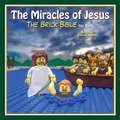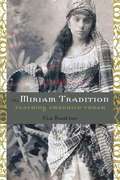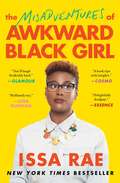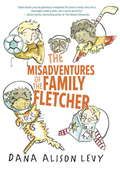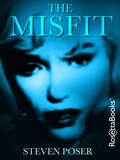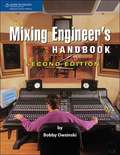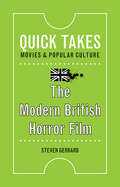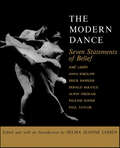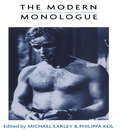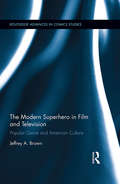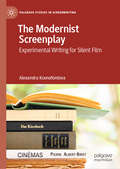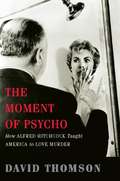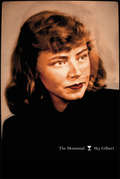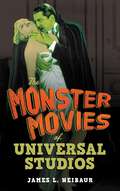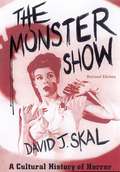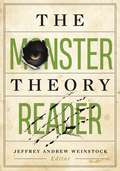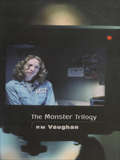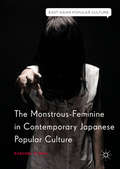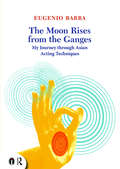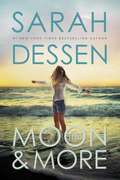- Table View
- List View
The Miracle of Clarence W. Jones & HCJB
by Lois Neely"Go south with radio," God said to Clarence Wesley Jones. So C. W. went south--to Ecuador. Come up to this mountain," God said. Clarence Jones ascended the mountain and perched his tiny radio operation in Quito, the city at the "top of the world." Lord, C. W. prayed then, give me this mountain. And so it was that in 1931, in a humble sheepshed rigged with a 250-watt transmitter and antenna wire, a Christmas program was broadcast to a total of just thirteen receiving sets, and HCJB was born. It was the advent of missionary radio. Come Up to This Mountain is the inspiring story of HCJB and the pioneering missionary spirit of C. W. Jones. A man of dreams, relentless energy, and immense practicality, C. W. Jones took that "soft whisper of the Andes" and, through hardship and tragedy, built it into a massive 500,000-watt radio center, a "mighty shout echoing around the globe." Give me this mountain, said C. W. Jones. And God gave him the world.
The Miracles of Jesus: The Brick Bible for Kids
by Brendan Powell SmithAs in all the Brick Bible books, Brendan Powell Smith creates a magical “brick” world—all in LEGOs—to illustrate stories from the Bible that are then photographed and accompanied by a simple text.In this book, there are many stories to tell. After being baptized, and in the company of his twelve disciples, Jesus began performing many great acts, including giving a blind man sight, raising a young girl from death, feeding five thousand people with two fish and five loaves of bread, and, perhaps the most famous of all, walking on water.
The Mirage of America in Contemporary Italian Literature and Film
by Barbara AlfanoThe Mirage of America in Contemporary Italian Literature and Film explores the use of images associated with the United States in Italian novels and films released between the 1980s and the 2000s. In this study, Barbara Alfano looks at the ways in which the individuals portrayed in these works - and the intellectuals who created them - confront the cultural construct of the American myth. As Alfano demonstrates, this myth is an integral part of Italians' discourse to define themselves culturally - in essence, Italian intellectuals talk about America often for the purpose of talking about Italy.The book draws attention to the importance of Italian literature and film as explorations of an individual's ethics, and to how these productions allow for functioning across cultures. It thus differentiates itself from other studies on the subject that aim at establishing the relevance and influence of American culture on Italian twentieth-century artistic representations.
The Miriam Tradition: Teaching Embodied Torah
by Cia SautterThe Miriam Tradition works from the premise that religious values form in and through movement, with ritual and dance developing patterns for enacting those values. Cia Sautter considers the case of Sephardic Jewish women who, following in the tradition of Miriam the prophet, performed dance and music for Jewish celebrations and special occasions. She uses rabbinic and feminist understandings of the Torah to argue that these women, called tanyaderas, "taught" Jewish values by leading appropriate behavior for major life events. Sautter considers the religious values that are in music and dance performed by tanyaderas and examines them in conjunction with written and visual records and evidence from dance and music traditions. Explaining the symbolic gestures and motions encoded in dances, Sautter shows how rituals display deeply held values that are best expressed through the body. The book argues that the activities of women in other religions might also be examined for their embodiment and display of important values, bringing forgotten groups of women back into the historical record as important community leaders
The Misadventures of Awkward Black Girl (A Bestselling Memoir)
by Issa RaeThe &“brilliantly wry&” (Lena Dunham) and &“lovably awkward&” (Mindy Kaling) New York Times bestseller from the creator of HBO&’s Insecure. In this universally accessible New York Times bestseller named for her wildly popular web series, Issa Rae—&“a singular voice with the verve and vivacity of uncorked champagne&” (Kirkus Reviews)—waxes humorously on what it&’s like to be unabashedly awkward in a world that regards introverts as hapless misfits and black as cool.I’m awkward—and black. Someone once told me those were the two worst things anyone could be. That someone was right. Where do I start? Being an introvert (as well as “funny,” according to the Los Angeles Times) in a world that glorifies cool isn’t easy. But when Issa Rae, the creator of the Shorty Award-winning hit series The Misadventures of Awkward Black Girl, is that introvert—whether she’s navigating love, the workplace, friendships, or “rapping”—it sure is entertaining. Now, in this New York Times bestselling debut collection written in her witty and self-deprecating voice, Rae covers everything from cybersexing in the early days of the Internet to deflecting unsolicited comments on weight gain, from navigating the perils of eating out alone and public displays of affection to learning to accept yourself—natural hair and all. The Misadventures of Awkward Black Girl is a book no one—awkward or cool, black, white, or other—will want to miss.
The Misadventures of the Family Fletcher
by Dana Alison LevyMeet the Fletchers. <P><P>Their year will be filled with new schools, old friends, a grouchy neighbor, hungry skunks, leaking ice rinks, school plays, wet cats, and scary tales told in the dark! <P><P> There's Sam, age twelve, who's mostly interested in soccer, food, and his phone; Jax, age ten, who's psyched for fourth grade and thinks the new neighbor stinks, and not just because of the skunk; Eli, age ten (but younger than Jax), who's thrilled to be starting this year at the Pinnacle School, where everyone's the smart kid; and Frog (not his real name), age six, who wants everyone in kindergarten to save a seat for his invisible cheetah. Also Dad and Papa. <P><P>WARNING: This book contains cat barf, turtle pee, and some really annoying homework assignments. Perfect for fans of The Penderwicks and James Patterson's Middle School series, this seriously funny, modern family adventure features two dads, four adopted boys, and a variety of pets.
The Misfit
by Steven PoserA fascinating account of the unusual relationship between Marilyn Monroe and her last psychiatrist in the fifteen months leading to her suicide. Marilyn Monroe is remembered as both an iconic sex symbol and a heartbreaking figure who suffered through a chaotic childhood and wrestled with addiction and mental illness. This short true account shines new light on the last days of her life. Dr. Ralph Greenson, a clinical professor of psychiatry at UCLA Medical School and a star among Hollywood psychoanalysts, treated Monroe for the fifteen months before her August 1962 suicide. He saw her seven days a week and brought her into his home. He never got over losing her. Written by a practicing psychoanalyst, The Misfit recounts this tragic alliance and Marilyn Monroe&’s borderline personality, offering compelling insight into the deteriorating mental state of a singular superstar.
The Mixing Engineer's Handbook (2nd edition)
by Bobby OwsinskiAppropriate for both novice and experienced recording engineers, this guide walks through the six elements of a mix--balance, panorama, frequency range, dimension, dynamics, and interest--and provides interviews with 22 professional mixers working in different genres. The second edition adds sections on gating, hypercompression, MP3 encoding, and surround sound mixing.
The Mode in Costume: A Historical Survey With 202 Plates (Dover Fashion and Costumes Series)
by R. Turner WilcoxThe pursuit of style has prompted centuries of dramatic change in fashion—and author R. Turner Wilcox researched and documented it all in this completely comprehensive volume. <p><p>A lifelong student of history, costume, and design, she observed decades of fashion innovations from major cities all over the world and served as fashion editor of Women's Wear Daily from 1910 to 1915. Her remarkable Mode series is a definitive reference for anyone with a passion for fashion. From the togas of ancient Rome to the gorgeous gowns of Dior, this lavishly illustrated, thoroughly researched treasury examines men's, women's, and children's clothing — plus accessories — from 3000 B.C. to 1958. <p><p>Based on medals, coins, sculpture, and decorations of various periods, the images include ancient Egyptian tunics, Chinese silks, Greek sandals, Roman bridal gowns, Persian parasols and fans, Victorian top hats and cravats, Renaissance lace, Venetian breeches, crinolines and bustles, fedoras and homburgs, as well as perfumes, hairstyles, and handbags. <p><p>A gathering of some of the most distinctive and dramatic styles through the ages, The Mode in Costume is an essential handbook for illustrators, costume designers, and theater students — and compulsory reading for fashionistas.
The Modern British Horror Film (Quick Takes: Movies and Popular Culture)
by Steven GerrardWhen you think of British horror films, you might picture the classic Hammer Horror movies, with Christopher Lee, Peter Cushing, and blood in lurid technicolor. Yet British horror has undergone an astonishing change and resurgence in the twenty-first century, with films that capture instead the anxieties of post-Millennial viewers. Tracking the revitalization of the British horror film industry over the past two decades, media expert Steven Gerrard also investigates why audiences have flocked to these movies. To answer that question, he focuses on three major trends: “hoodie horror” movies responding to fears about Britain’s urban youth culture; “great outdoors” films where Britain’s forests, caves, and coasts comprise a terrifying psychogeography; and psychological horror movies in which the monster already lurks within us. Offering in-depth analysis of numerous films, including The Descent, Outpost, and The Woman in Black, this book takes readers on a lively tour of the genre’s highlights, while provocatively exploring how these films reflect viewers’ gravest fears about the state of the nation. Whether you are a horror buff, an Anglophile, or an Anglophobe, The Modern British Horror Film is sure to be a thrilling read.
The Modern Dance: Seven Statements of Belief
by Erick Hawkins José Limón Anna SokolowCONTRIBUTORS: Jose Limon, Anna Sokolow, Erick Hawkins, Donald McKayle, Alwin Nikolas, Pauline Koner, Paul Taylor.
The Modern Feminine in the Medusa Satire of Fanny Fern (Palgrave Studies in Nineteenth-Century Writing and Culture)
by James E. CaronThe Modern Feminine in the Medusa Satire of Fanny Fern argues that Sara Parton and her literary alter ego, Fanny Fern, occupy a star-power position within the antebellum literary marketplace dominated by women authors of sentimental fiction, writers Nathaniel Hawthorne (in)famously called “the damn mob of scribbling women.” The Fanny Fern persona represents a nineteenth-century woman voicing the modern feminine within a laughter-provoking bourgeois carnival, a forerunner of Hélène Cixous’s laughing Medusa figure and her theory about écriture féminine. By advancing an innovative theory about an Anglo-American aesthetic, comic belles lettres, Caron explains the comic nuances of Parton’s persona, capable of both an amiable and a caustic satire. The book traces Parton’s burgeoning celebrity, analyzes her satires on cultural expectations of gendered behavior, and provides a close look at her variegated comic style. The book then makes two first-order conclusions: Parton not only offers a unique profile for antebellum women comic writers, but her Fanny Fern persona also anchors a potential genealogy of women comic writers and activists, down to the present day, who could fit Kate Clinton’s concept of fumerism, a feminist style of humor that fumes, that embraces the comic power of a Medusa satire.
The Modern Monologue: Men
by Michael Earley Philippa KeilThe Modern Monologue in two volumes, one for men and one for women, is an exciting selection of speeches drawn from the landmark plays of the 20th century. The great playwrights of the British, American and European theatre-- and the plays most constantly performed on stage throughout the world--are represented in this unique collection. Monologues of all types--both serious and comic, realistic and absurdist--provide a dynamic challenge for all actors: the student, the amateur and the professional. A fuller appreciation of each speech is enhanced by the editors' introduction and commentaries that set the plays and individual speeches in their dramatic and performance contexts.
The Modern Superhero in Film and Television: Popular Genre and American Culture (Routledge Advances in Comics Studies)
by Jeffrey A. BrownHollywood’s live-action superhero films currently dominate the worldwide box-office, with the characters enjoying more notoriety through their feature film and television depictions than they have ever before. This book argues that this immense popularity reveals deep cultural concerns about politics, gender, ethnicity, patriotism and consumerism after the events of 9/11. Superheroes have long been agents of hegemony, fighting for abstract ideals of justice while overall perpetuating the American status quo. Yet at the same time, the book explores how the genre has also been utilized to question and critique these dominant cultural assumptions.
The Modernist Screenplay: Experimental Writing for Silent Film (Palgrave Studies in Screenwriting)
by Alexandra KsenofontovaThe Modernist Screenplay explores the film screenplay as a genre of modernist literature. It connects the history of screenwriting for silent film to the history of literary modernism in France, Germany, and Russia. At the same time, the book considers how the screenplay responded to the modernist crisis of reason, confronted mimetic representation, and sought to overcome the modernist mistrust of language with the help of rhythm. From the silent film projects of Bertolt Brecht, to the screenwriting of Sergei Eisenstein and the poetic scripts of the surrealists, The Modernist Screenplay offers a new angle on the relationship between film and literature. Based on the example of modernist screenwriting, the book proposes a pluralistic approach to screenplays, an approach that sees film scripts both as texts embedded in film production and as literary works in their own right. As a result, the sheer variety of different and experimental ways to tell stories in screenplays comes to light. The Modernist Screenplay explores how the earliest kind of experimental screenplays—the modernist screenplays—challenged normative ideas about the nature of filmmaking, the nature of literary writing, and the borders between the two.
The Moment of Psycho: How Alfred Hitchcock Taught America to Love Murder
by David ThomsonIt was made like a television movie, and completed in less than three months. It killed off its star in forty minutes. There was no happy ending. And it offered the most violent scene to date in American film, punctuated by shrieking strings that seared the national consciousness. Nothing like Psycho had existed before; the movie industry-even America itself-would never be the same. In The Moment of Psycho, film critic David Thomson situates Psycho in Alfred Hitchcock’s career, recreating the mood and time when the seminal film erupted onto film screens worldwide. Thomson shows that Psycho was not just a sensation in film: it altered the very nature of our desires. Sex, violence, and horror took on new life. Psycho, all of a sudden, represented all America wanted from a film-and, as Thomson brilliantly demonstrates, still does.
The Mommiad
by Sky GilbertPoetic and heartfelt, The Mommiad chronicles the relationship between a mother and her son, the ups and downs they shared, and the toll that alcohol and dementia would eventually take on Patricia Tucker Gilbert's life. Intimate and affirming, Sky Gilbert confirms the bond he shared with his mother, both in his own voice and through the voice of his alter ego, Jane. The Mommiad is lyrical and tragic and true, an artist's self-reflection and an endeavour to turn one woman's life into an artistic experience.
The Monster Movies of Universal Studios
by James L NeibaurThis history and critique of classic scary films &“honors Universal&’s horror legacy. . . . an excellent resource for film students and monster movie fanatics&” (Library Journal). In 1931 Universal Studios released Dracula starring Bela Lugosi. This box office success was followed by a string of films featuring macabre characters and chilling atmospherics, including Frankenstein, The Mummy, and The Invisible Man. With each new film, Universal established its place in the Hollywood firmament as the leading producer of horror films, a status it enjoyed for more than twenty years. In The Monster Movies of Universal Studios, James L. Neibaur examines the key films produced by the studio from the early 1930s through the mid-1950s. In each entry, Neibaur recounts the movie&’s production, provides critical commentary, considers the film&’s commercial reception, and offers an overall assessment of the movie&’s significance. Neibaur also examines the impact these films had on popular culture, an influence that resonates in the cinema of fear today. From the world premiere of Dracula to the 1956 release of The Creature Walks among Us, Universal excelled at scaring viewers of all ages—and even elicited a few chuckles along the way by pitting their iconic creatures against the comedic pair of Abbott and Costello. The Monster Movies of Universal Studios captures the thrills of these films, making this book a treat for fans of the golden age of horror cinema. &“Studio stills and trade ads for several of the films add a suitably scary touch to this treat for fans and scholars alike. ― Booklist &“An impressive work of film scholarship.&” ― Cinema Retro
The Monster Show: A Cultural History of Horror
by David J. SkalIlluminating the dark side of the American century, The Monster Show uncovers the surprising links between horror entertainment and the great social crises of our time, as well as horror's function as a pop analogue to surrealism and other artistic movements. With penetrating analyses and revealing anecdotes, David J. Skal chronicles one of our most popular and pervasive modes of cultural expression. He explores the disguised form in which Hollywood's classic horror movies played out the traumas of two world wars and the Depression; the nightmare visions of invasion and mind control catalyzed by the Cold War; the preoccupation with demon children that took hold as thalidomide, birth control, and abortion changed the reproductive landscape; the vogue in visceral, transformative special effects that paralleled the development of the plastic surgery industry; the link between the AIDS epidemic and the current fascination with vampires; and much more. Now with a new Afterword by the author that looks at horror's popular renaissance in the last decade, The Monster Show is a compulsively readable, thought-provoking inquiry into America's obsession with the macabre.
The Monster Theory Reader
by Jeffrey Andrew WeinstockA collection of scholarship on monsters and their meaning—across genres, disciplines, methodologies, and time—from foundational texts to the most recent contributions Zombies and vampires, banshees and basilisks, demons and wendigos, goblins, gorgons, golems, and ghosts. From the mythical monstrous races of the ancient world to the murderous cyborgs of our day, monsters have haunted the human imagination, giving shape to the fears and desires of their time. And as long as there have been monsters, there have been attempts to make sense of them, to explain where they come from and what they mean. This book collects the best of what contemporary scholars have to say on the subject, in the process creating a map of the monstrous across the vast and complex terrain of the human psyche.Editor Jeffrey Andrew Weinstock prepares the way with a genealogy of monster theory, traveling from the earliest explanations of monsters through psychoanalysis, poststructuralism, and cultural studies, to the development of monster theory per se—and including Jeffrey Jerome Cohen&’s foundational essay &“Monster Theory (Seven Theses),&” reproduced here in its entirety. There follow sections devoted to the terminology and concepts used in talking about monstrosity; the relevance of race, religion, gender, class, sexuality, and physical appearance; the application of monster theory to contemporary cultural concerns such as ecology, religion, and terrorism; and finally the possibilities monsters present for envisioning a different future. Including the most interesting and important proponents of monster theory and its progenitors, from Sigmund Freud to Julia Kristeva to J. Halberstam, Donna Haraway, Barbara Creed, and Stephen T. Asma—as well as harder-to-find contributions such as Robin Wood&’s and Masahiro Mori&’s—this is the most extensive and comprehensive collection of scholarship on monsters and monstrosity across disciplines and methods ever to be assembled and will serve as an invaluable resource for students of the uncanny in all its guises.Contributors: Stephen T. Asma, Columbia College Chicago; Timothy K. Beal, Case Western Reserve U; Harry Benshoff, U of North Texas; Bettina Bildhauer, U of St. Andrews; Noel Carroll, The Graduate Center, CUNY; Jeffrey Jerome Cohen, Arizona State U; Barbara Creed, U of Melbourne; Michael Dylan Foster, UC Davis; Sigmund Freud; Elizabeth Grosz, Duke U; J. Halberstam, Columbia U; Donna Haraway, UC Santa Cruz; Julia Kristeva, Paris Diderot U; Anthony Lioi, The Julliard School; Patricia MacCormack, Anglia Ruskin U; Masahiro Mori; Annalee Newitz; Jasbir K. Puar, Rutgers U; Amit A. Rai, Queen Mary U of London; Margrit Shildrick, Stockholm U; Jon Stratton, U of South Australia; Erin Suzuki, UC San Diego; Robin Wood, York U; Alexa Wright, U of Westminster.
The Monster Trilogy
by R. M. VaughanOgres, trolls, demons - monsters, like violence, are always represented as male. Not this time. Celebrated playwright RM Vaughan gives us, in three one-act monologues, three very monstrous women. 'In A Visitation by St Teresa of Avila upon Constable Margaret Chance,' we meet a middle-aged police officer whose world view is determined by her obsession with race, bloodlines and genetic determinism. 'The Susan Smith Tapes' (made into a film for CBC and Showcase by Jeremy Podeswa) shows the famous American who drowned her two young sons trying to recapture the public's attention by auditioning for talk shows. And 'Dead Teenagers' introduces us to a frustrated reverend unhealthily addicted to the spectacle of large funerals for murdered children.
The Monstrous-Feminine in Contemporary Japanese Popular Culture (East Asian Popular Culture)
by Raechel DumasThis book explores the monstrous-feminine in Japanese popular culture, produced from the late years of the 1980s through to the new millennium. Raechel Dumas examines the role of female monsters in selected works of fiction, manga, film, and video games, offering a trans-genre, trans-media analysis of this enduring trope. The book focuses on several iterations of the monstrous-feminine in contemporary Japan: the self-replicating shōjo in horror, monstrous mothers in science fiction, female ghosts and suburban hauntings in cinema, female monsters and public violence in survival horror games, and the rebellious female body in mytho-fiction. Situating the titles examined here amid discourses of crisis that have materialized in contemporary Japan, Dumas illuminates the ambivalent pleasure of the monstrous-feminine as a trope that both articulates anxieties centered on shifting configurations of subjectivity and nationhood, and elaborates novel possibilities for identity negotiation and social formation in a period marked by dramatic change.
The Moon Rises from the Ganges: My journey through Asian acting techniques (Routledge Icarus)
by Eugenio BarbaA collection of texts by Eugenio Barba reconstructing the history of his relationships with the Asian classical theatres. Interweaving stories of journeys, meetings, anecdotes, reflections and technical descriptions, the author exposes the phases and changes in a passion that covers the fifty years of his professional trajectory. Little known or unpublished texts are included together with widely diffused articles which have become classics. The result is a book which examines in detail an important chapter of the dialogue between East and West in the theatre culture of the twentieth century.
The Moon and More
by Sarah DessenIn her eleventh novel, Sarah Dessen returns to the beach town of Colby, setting of some of her best-loved books. Emaline is a Colby native, and so summer at the beach for her means hard work and a new population of beach goers. During this, her last summer before college, Emaline meets Theo while working for her family's rental business. He's a city boy who's come to Colby as the assistant to a high-strung documentary filmmaker who's in town to profile a reclusive local artist. Emaline knows he's not her type, but she can't help feeling drawn to him. And as their relationship develops, Emaline finds herself questioning her own goals, values, and choices in this classic Dessen romance.this story of romance, yearning, and, finally, empowerment. It could only happen in the summer. "Completely engaging, infused with moments of sweetness, humor and major epiphanies." --Kirkus Reviews Also by Sarah Dessen:Along for the RideDreamlandJust ListenKeeping the MoonLock and KeySomeone Like YouThat SummerThis LullabyThe Truth About ForeverWhat Happened to Goodbye

